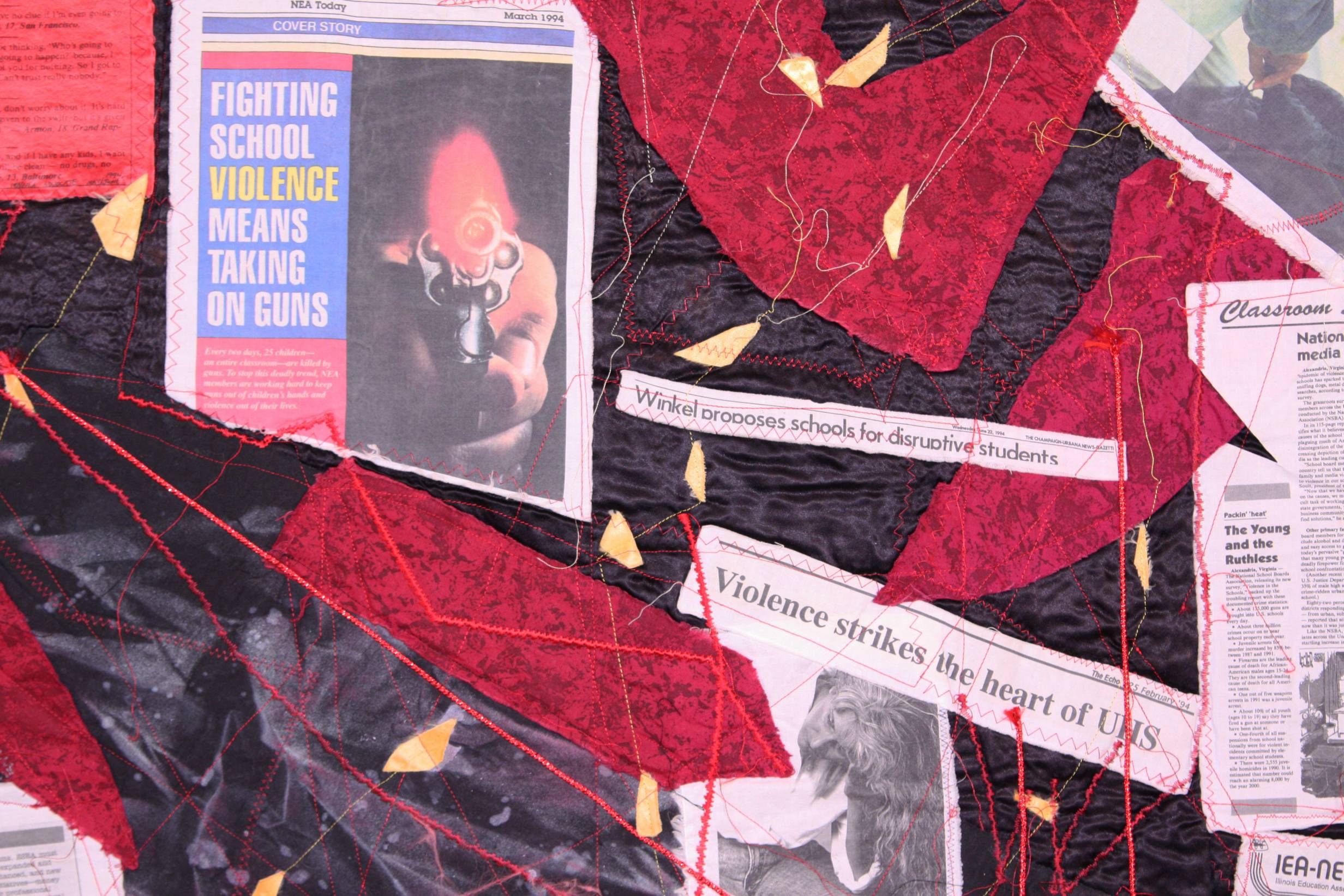Boneyard 2011 @ Indi Go
 Reception: Thursday, April 7 from 7-9pm
Reception: Thursday, April 7 from 7-9pm
Artist Talk w/ Deborah Fell @ 7:30pm
Open Hours:
Tuesday, April 5 — 4:30-7:30pm
Wednesday, April 6 — 4:30-7:30pm
Thursday, April 7 — 7:00-9:00pm Artist Reception
Friday April 8 — Art + Amasong 5:00-7:00pm
Saturday, April 9 — 1:00-5:00pm
Deborah Fell: Transitions
For the first time, Deborah Fell’s displayed art quilts will chronicle the evolution of her art. The first art quilt dates back to twenty years. The exhibit will include work that most of the public has never seen.
Deborah Fell is an artist whose medium is quilting. Her tools include natural fabrics, fiber reactive dyes, textile paints, stitching and repurposed objects. She creates dimension, movement and depth using line and color. Deborah creates art quilts because they are a means of self-expression which combines the beauty of art and the comforting tradition of quilting. The unifying element of her art is the communication of a visual message; technique is secondary and driven by this focus.
Deborah will hold an artist talk @ 7:30pm
Thursday, April 7th during the Opening Reception.
Charles Wisseman is a retired medical doctor who is pursuing a second career in mixed media art. Although he has no formal art training, he has taken numerous workshops to learn techniques from blacksmithing and other metals, ceramics, glass, woodworking, photography and papermaking. He volunteers at the U of I library doing book repair, which has led to more involvement with the book arts.
Art work includes lamps, sculpture, wall pieces, boxes and book forms using a variety of materials and found objects in mixed-media collage. Inspirations include natural forms, medical microscopy, and artists such as Joseph Cornell and Lee Bontecou. Works often include light, some interactive movement, symbols such as the labyrinth ( Charles was involved in the walking labyrinth in Crystal Lake park), and explorations of visually- related forms in varied materials. Training in medical pathology shows in the use of cross-sectional structures, skin-like textures in hand-made paper, cell-like biomorphic patterns with repetition and variation, transilluminating light, and a tendency to use complex architecture.
Recent shows have included Springer Center, Springfield Art Association, and Midwest Guild of Book Workers members exhibit (currently traveling).








